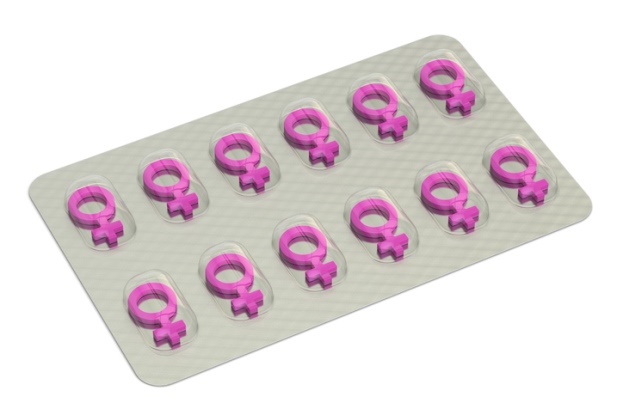Worried about the impact of screens on your child’s eyesight? Get them outdoors, say doctors.
Daily Archives: 27/12/2017
New model considers an extra factor to improve our prediction of nuclear fission
[unable to retrieve full-text content]

Impact of obesity on bone marrow cells
[unable to retrieve full-text content]

Is punishment as effective as we think?
[unable to retrieve full-text content]

Health24.com | ‘I refused to let bipolar control me’
People living with mental health disorders generally struggle to find the correct help and treatment – particularly those living in rural areas.
Sebendzile Mkhomazi (30) of Mpumalanga said this was the case for her as she struggled for years before she was eventually diagnosed with bipolar disorder and given the correct treatment.
Misunderstood
She first experienced the symptoms at the age of 14, just a few months after her mother died.
“At first things were fine, until I started experiencing different emotions. My family thought it was the stress of losing my mother,” Mkhomazi explained.
“Living in a deep rural community with an unknown disorder meant that it took us a long time to eventually get to the clinic. And then when we did, the people didn’t have enough information about the disorder. I was constantly judged and discriminated against. Life became unbearable.
“Even my family knew nothing about the sudden condition that attacked. I remember the were many suggestions that I should go to a sangoma. So my grandparents took me to one known sangoma in the village,” she said, remembering the events that transpired 16 years ago.
“Even though it was many years ago, I still recall those days like it was just yesterday. I was made to drink two litres after two litres of medicines that didn’t help. And I still experienced all those mixed emotions. I was frustrated, but still my father couldn’t stop me from drinking that disgusting and smelly medicine.”
Difficulties at school
She continued, “My years in school were another issue. I remember one of my teachers in grade 9 telling me I will not complete high school because I was stupid and slow learner. Because I couldn’t deal with her, I skipped school a lot.”
Mkhomazi remained confused and helpless, and withdrew from her family. She started drinking heavily and smoking dagga.
“With my disorder and those intoxicating substances my behaviour totally changed. I became violent towards my siblings,” she said.
Eventually her father agreed to take her back to the clinic to seek further help. After being seen by medical professionals she was diagnosed with bipolar disorder and immediately put on treatment.
“That changed my life; I was able to concentrate in class and engaged again with my school work.”
Discrimination
According to the South African Depression and Anxiety Group (SADAG), bipolar disorder affects about 1% of the population. While the disorder is sometimes seen in children, the usual age of onset is late adolescence and early adulthood.
“I don’t want to lie. Over the years living in rural community with a disorder was hard. I was stigmatised and discriminated against. But those experiences have made me strong. I have learnt to work more than the average person and I couldn’t let the world determine my future,” she said.
“Just because I have never let people use my disorder to control me, I was able to complete high school. Now I am employed in one of the mines in Gert Sibande District, and over the years I have bought a car and house. I am happy with what I have achieved because it was not an easy journey moving from back there to here.”
Her story is not isolated.
“We have a big problem with stigma and discrimination against people with different chronic illnesses like bipolar disorder. Many people believe it’s a curse, which it is not. With an early diagnosis, treatment and support anyone can live a health and positive life with bipolar,” said community nurse Zanele Zwane. – Health-e News
Image credit: iStock
NEXT ON HEALTH24X

Health24.com | 10 of the most fascinating medical advancements of 2017
There has been enormous progress in the medical field over the last century with new developments and discoveries, and considerable refinement of older technologies.
One of the best examples is the world’s first heart transplant, carried out by Professor Chris Barnard at Groote Schuur Hospital in Cape Town in 1967.
Other, perhaps less spectacular but no less significant, advancements include the improvement of prosthetic limbs and the advent of computers which fuelled an explosion of information across the globe.
Each year brings new discoveries and advancements and 2017 was no exception. Here are 10 of the most fascinating medical advancements of this year:
1. Ketamine may be more effective than regular antidepressants
With more than 300 million people worldwide suffering from depression, it can be a challenge to find the right cocktail of drugs. But now there’s new hope as the party drug ketamine, which is normally used as an animal anaesthetic, has shown some promise as a treatment for depression. However, researchers are not yet ready to recommend it because its long-term effects remain unknown.
2. Tweaking your DNA can remove diseases
DNA manipulation has been used over the last few years to eradicate a number of different diseases. By the end of 2017 researchers aim to remove many more diseases from humans by means of genetic manipulation.

3. Change your gut flora to help fight cancer
New research has found that gut bacteria play a key role in the human immune system. The trillions of bacteria and other microbes that live in the human intestines are referred to as the “microbiome”. This finding raises the possibility that manipulating the gut microbiome could improve the chances of responding to especially cancer treatment.
4. Driverless cars can definitely save lives
New reports suggest that the sooner driverless cars make their way onto roadways, the sooner thousands of lives will be saved each year. Although “highly automated vehicles” might be somewhat less than perfectly safe, the introduction of self-driving cars (which are just 10% safer than cars driven by humans) could save hundreds of thousands of lives over a 15- to 30-year period.

5. Check out your unborn baby in 3-D
Researchers say that expectant parents may soon be able to view a three-dimensional virtual reality version of the foetus. An added benefit is that because these 3-D models recreate the entire internal structure of the foetus, it can help doctors detect any abnormalities.

6. Chat to your doctor on your laptop
Imagine not having to drive to visit your doctor. This is becoming a reality as many doctors and therapists see patients via video chat. It is projected that by the end of 2017 more than half of practices in the US will have video chat facilities.

7. A ‘bionic’ eye can help blind people see
Unfortunately there is no cure for eye diseases like macular degeneration. However, a British scientist has developed a device that will help you see as you lose your sight to this disease. Called the Argus II, it takes video images that are converted by a special pair of glasses to electrical pulses that are transmitted wirelessly to the brain where they are registered as shapes, light and dark. This technology should be widely available by the end of 2017.
8. Pills that won’t get stuck in your throat
Many people hate swallowing their daily pills, and soon that might be something of the past. A new pill has been approved by the FDA that dissolves into liquid as soon as you put it into your mouth.
9. A pill to rev up women’s sex drive
There are many drugs on the market to increase a man’s libido and until now there has been nothing for women. The FDA has recently approved a medication called Addyi which is designed to boost low sex drives in women. It is expected to be widely available by the end of 2017.

10. Pacemaker made easy
A new small, wireless pacemaker has been developed. Because it has no wires, there is no chance of infection. There is also no surgery required to implant the device because it is pushed in place through the femoral vein by means of a catheter.
Image credits: iStock

Health24.com | Money meant for abused children not paid by Department of Social Development
Several homes for vulnerable children in Alexandra and the surrounding areas are begging the Department of Social Development to pay them the temporary safety care grant money they are entitled to.
According to one of the concerned caregivers, Matshidiso Seruwe of Legae La Bana, this is the money that is given to them for temporarily safeguarding abused, molested and neglected children.
They are the children who have been removed from their homes and kept in temporary care until the police and the social workers are satisfied with their investigations.
On occasion the investigations take a long time, which means the temporary homes are required to shelter the children for lengthy periods of time. Also, many of these shelters are pressured to take in more children than they should when abuse cases increase.
Care mothers unpaid
Seruwe said these are some of the grievances experienced by temporary care mothers. She says she is owed thousands for this year alone, and more if she includes previous years. She said she was entitled to claim R16,50 per child per day, and she takes in 13 children.
“The last time I tried to claim I was asked to motivate why I claimed such a big amount of money. I didn’t understand why as I used to claim without any problems. I gave them all documents they wanted but I’m still waiting. I don’t know why the department is giving us these troubles,” she said.
“But when they bring kids to us they expect us to take them without any delay.”
High costs
She said running a home involes many costs, particularly when children need to be taken to a doctor or require extra care.
“If it weren’t for generous donations from good Samaritans, I doubt we would still exist.”
Another home owner, Elizabeth Monyela of Thuthuzela in Marlboro, said she has given up on receiving her money. “I’ve realised it is a fruitless exercise to run after this money. I’d rather look for other ways to survive because I love kids.”
Attempts to get a response from the Gauteng Department of Social Development were fruitless despite numerous requests to do so through phone calls, emails and SMSes.
However, one social worker with intimate knowledge on the subject, opted to speak on conditions of anonymity. She was shocked that temporary care mothers had to wait for their grants.
“I don’t know the merits of this case, but usually it shouldn’t take more than six weeks to get the money if all relevant documents were supplied,” she said, adding that individual care mothers shouldn’t take more than six children and are paid monthly while youth and children’s homes can take in bigger numbers and are paid quarterly. – Health-e News
Image credit: iStock
NEXT ON HEALTH24X




